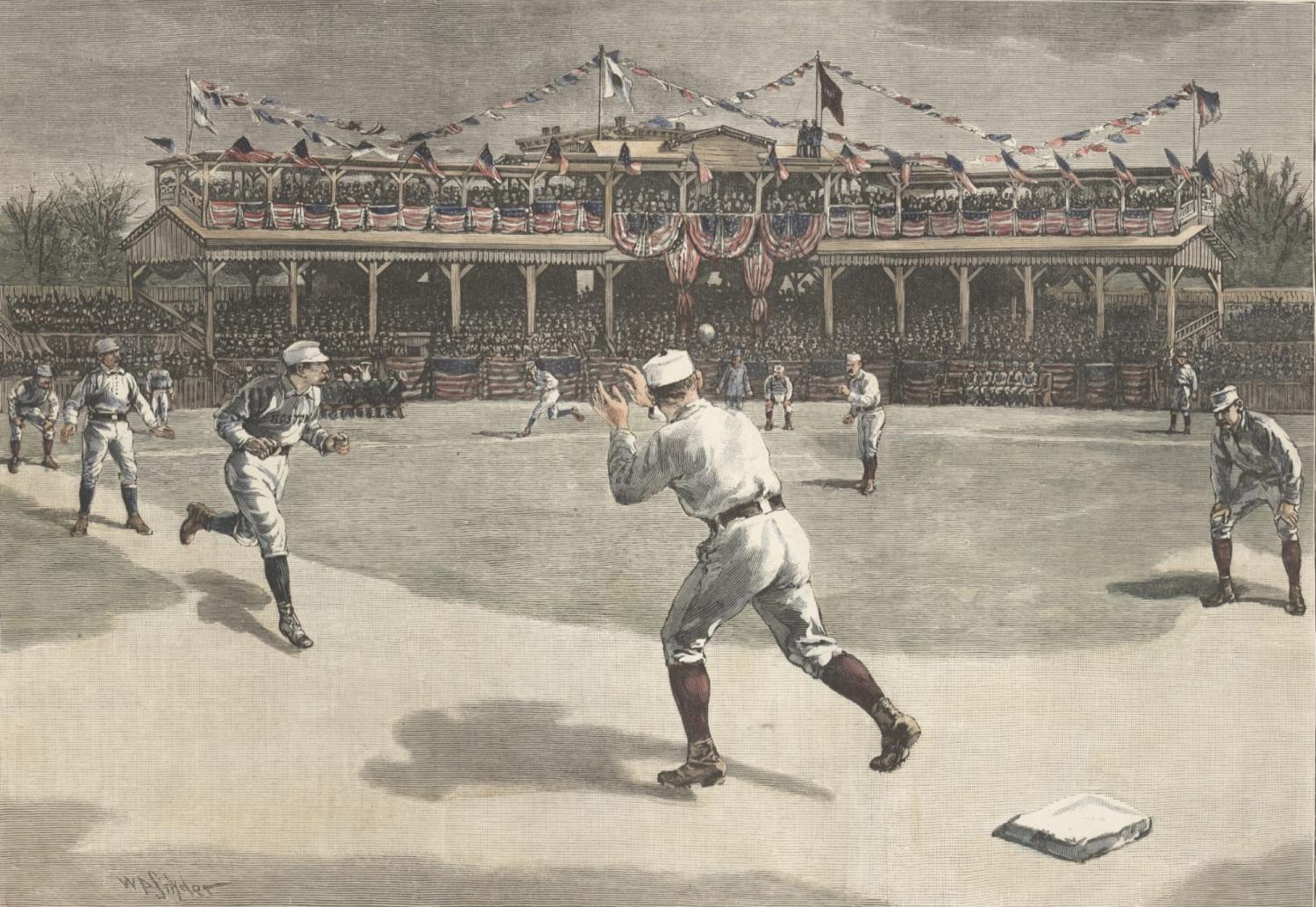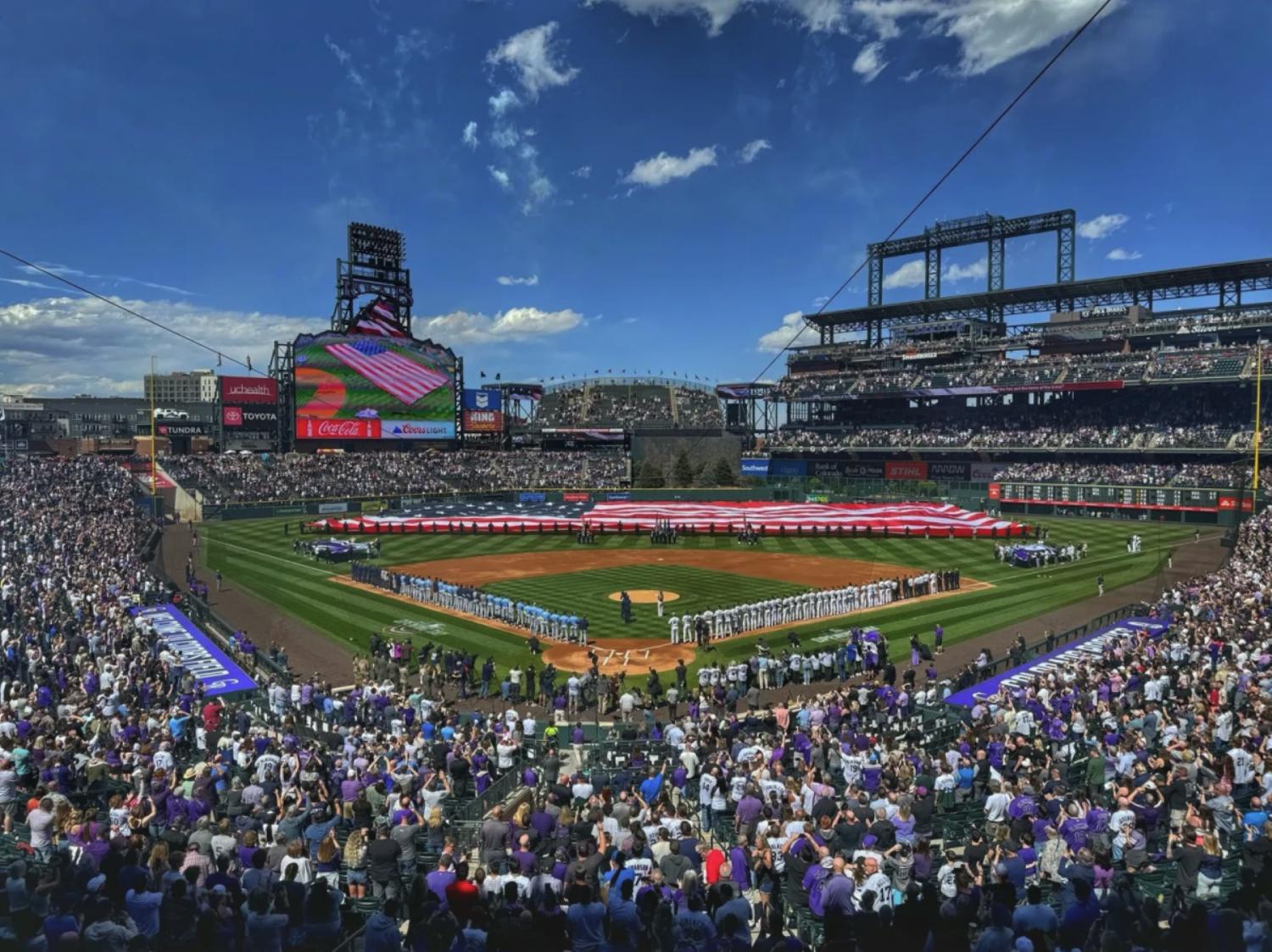Embracing all the joy in Mudville
Even though Major League Baseball faces an uncertain future entering its 150th season, Opening Day still holds a special place in the culture and fans’ hearts
As Rockies fans make their way to Denver for the team's 33rd home opener Friday, we are reminded of the excitement and hope that accompanies every team starting the season and looking toward the World Series. Why does opening day mean so much to so many?
For many, spring and summer are marked by the cracking of bats and the camaraderie of the tailgate as fan hope is renewed and the losses of seasons past are replaced by visions of the World Series. Even as baseball faces a less-than-certain future, with viewership down and ticket prices way, way up, Opening Day remains deeply rooted in our collective memories. Why?

Jared Bahir Browsh is the Critical Sports Studies program director in the CU Boulder Department of Ethnic Studies.
This tradition has been nearly 150 years in the making, with the first National League Opening Day occurring on April 22, 1876, in Philadelphia, with the Athletics defeating the Boston Red Caps. Since that first opener, the tradition and pageantry has only grown, with cities recognizing the day with parades and fans awakening from their winter hibernation to celebrate what has become an unofficial holiday in many cities.
One city where this tradition is strongly rooted is Cincinnati, home of the first recognized all-professional team in baseball, the Red Stockings. Manager John Joyce, who organized the original team in 1866, updated the Cincinnati franchise in 1875, and the team then joined the newly established National League (NL) in 1876.
Though beer has become a baseball tradition, in 1880 the Cincinnati Reds were kicked out of the NL for selling beer and playing on Sundays. Previous to that, William Hulbert, who had overseen the organization of the league after the National Association of Professional Base Ball Players (NA) disbanded, took several of the financially successful teams from the NA and established the NL with a number of strict rules, including a ban on alcohol sales and a ban on Sunday games, to address the negative reputation of baseball at the time—which included drinking, gambling and debauchery. The Cincinnati franchise ignored these rules, partly as an effort to attract German immigrants to the game, and was expelled, leading the team to go bankrupt and fold.
In spite of these challenges, professional baseball continued in Cincinnati, with Opening Day growing in prominence. The Reds have played almost every opening day at home since 1876, a tradition most likely rooted in their position as one of the southernmost charter members in the NL. The newly re-established Cincinnati Reds played in the American Association before joining the NL again in 1890 with the Brooklyn Bridegrooms (now Dodgers), expanding the NL to eight teams. Reds’ business manager Frank Bancroft began to intensely market Opening Day after he joined the team in 1892, establishing a tradition for not only the Queen City, but baseball as a whole, which just so happened to be the same year the NL allowed beer sales and games on Sunday.
Snow on Opening Day

An illustration of Opening Day at New York's Polo Grounds on April 29, 1886. (Illustration: Greater Hartford Twilight Baseball League)
The Opening Day tradition continued to grow after the turn of the 20th century, although weather, and sometimes even the fans, did not always cooperate. After the New York Giants went down 3-0 in their Opening Day game against the Philadelphia Phillies at the historic Polo Grounds in 1907, Giants fans threw snowballs on the field—including one that hit the home plate umpire, leading him to call the game in favor of the Phillies.
Attention on Opening Day increased when baseball fan President William Howard Taft threw out the ceremonial first pitch for the Washington Senators in their home opener in 1910. Twelve presidents have thrown out the ceremonial first pitch of the season, and many franchises have invited team legends and celebrities to welcome in the new season.
In 1920, the tradition of the Findlay Market Parade began in Cincinnati to celebrate Opening Day after the team won the 1919 World Series in spite of rumors that the Chicago White Sox had fixed the series—rumors that were later confirmed. Other teams built their own Opening Day traditions over time, like the Anheuser-Busch Clydesdale circling the field in St. Louis.
Opening Day continued despite two world wars and the Great Depression, with a number of milestones being established by the unofficial holiday. In the Brooklyn Dodgers’ Opening Day game on April 15, 1947, Jackie Robinson broke the color line in baseball, scoring the winning run against the Boston Braves. In 1974, while playing for the same Braves—who had relocated from Milwaukee to Atlanta in 1966—Hank Aaron tied Babe Ruth’s home run record at 714. The following season, Frank Robinson debuted as the first African American manager in baseball history.
Major League Baseball has maintained the tradition of Opening Day, even creating a unique logo in 2001, in spite of changes in the schedule. ESPN began broadcasting “opening games” the night before the official Opening Day in 1994, further establishing the noteworthy aspects of the day. On Opening Day in 1999, the first regular-season game outside of the United States was played in Monterrey, Mexico, with the Rockies beating the San Diego Padres 8-2.

The Colorado Rockies will play their 2025 home opener Friday at Coors Field in Denver. (Photo: Visit Denver)
The first regular season to open outside of North America occurred the next year in Tokyo; however, the games between the New York Mets and Chicago Cubs were scheduled the week before the official Opening Day, establishing the precedent that these early season international opening games would not be considered Opening Day games. The 2025 Tokyo Series took place between the Dodgers and Cubs on March 18 and 19, following several exhibition games in Japan—more than a week before the officially recognized Opening Day.
Opening Day traditionally took place on a Monday through the 2011 season, when MLB split the Opening Days of its 30 teams across two days to the last Thursday and Friday of March to avoid the World Series extending into November, as it had the previous two seasons. After returning to a Monday start in 2013, the league made the change to start the season on a Thursday permanent in 2018, with all 30 teams scheduled to play on Thursday, March 29.
As Major League Baseball begins its 150th season, many questions remain regarding the future of the sport. Two teams are playing in minor league stadiums due to the pending relocation of the Athletics and the Tampa Bay Rays, and MLB and ESPN will end their media rights deal following the 2025 season, after the network tried to reduce its rights payments from $550 million to $200 million.
MLB continues to try to make games more attractive to younger fans by speeding up pace of play and by highlighting top stars like the L.A. Dodgers’ Shohei Ohtani and the Mets’ Juan Soto. In spite of this transitional period for the sport, however, one thing remains constant: the hope and excitement that Opening Day inspires.
Jared Bahir Browsh is an assistant teaching professor of critical sports studies in the CU Boulder Department of Ethnic Studies.
Did you enjoy this article? Subscribe to our newsletter. Passionate about critical sports studies? Show your support.

